Machine gun DS-39 (Degtyarev Machine easel 39)
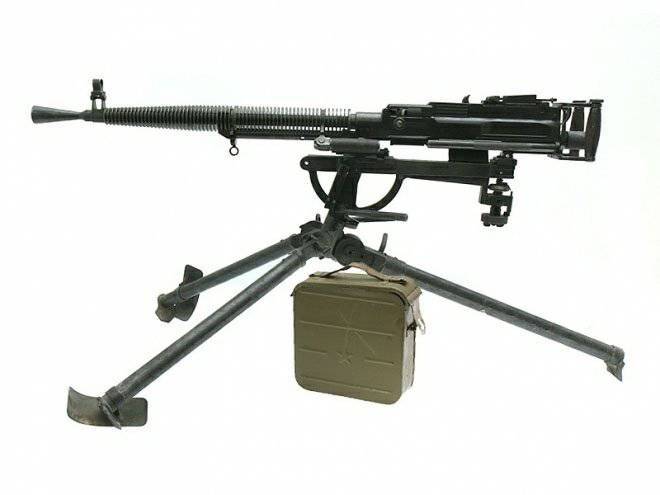
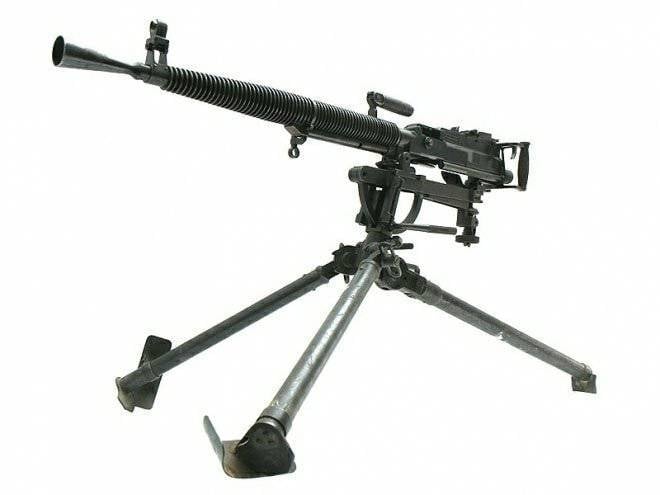
The first machine gun based on the “Degtyarev Infantry” on the universal Kolesnikov machine was introduced by the designer already at the beginning of 30. Subsequently, the machine gun was repeatedly refined, as requirements changed and its shortcomings were revealed. For example, in 1933, the machine gun was adapted for using the cloth tape from Maxim, and later for loose-leaf tape of the type Maxim-Vikkers.
In addition to V.A. Degatreva in the development of the machine gun involved S.M. Krekin, P.E. Ivanov, A.I. Kuznetsov (master), and N.D. Zernyshkin (mechanic).
The machine gun of Degatreva after numerous modifications became less unified with the manual one, but retained a number of common features. Machine gun automatics worked due to removal of powder gases into the gas chamber. The camera was located in the middle part (bottom) of the trunk. The gas piston had a long stroke. The gas chamber had a pipe. The gas chamber regulator limited the amount of exhaust gases. The shot was made from the rear whisper. Two symmetrical lugs locked the barrel bore - moving forward the bolt of the bolt carrier pulled apart the lugs, and when moving backward the lugs came down with bevels of the frame. The original feature of the machine gun was a double rate of fire - on ground targets it reached 600 rounds per minute, on aerial targets 1200 rounds per minute. To increase the pace served spring buffer mounted in the back plate. The buffer was turned on at high elevation angles.
Replaceable barrel machine gun was equipped with a conical flame arrester and transverse fins. Foldable handle on the barrel served to carry the machine gun and facilitate the change of the barrel.
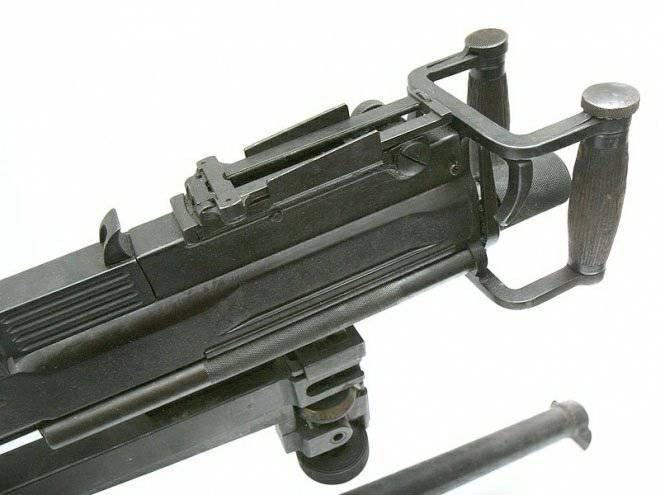
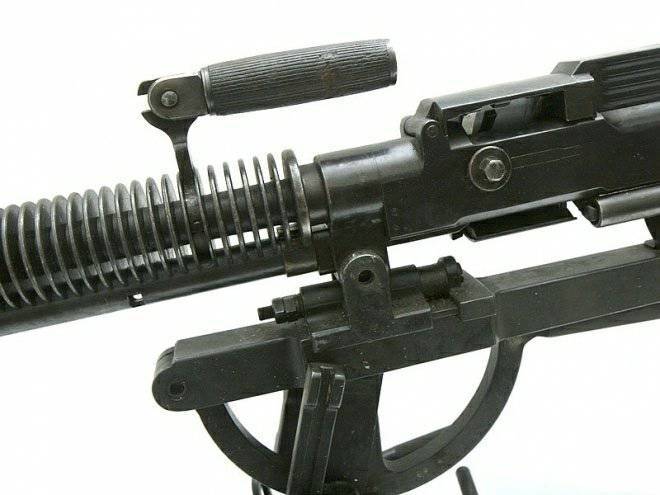
The machine gun was equipped with a folding frame sight with scales for heavy and light bullets. The controls were the lever and the two handles of the back plate, made according to the type of Maxim machine gun. Since these controls were installed reciprocating spring (which on prototypes was placed in the tube butt plate) was transferred to the receiver tube located on the bottom left side. On the right side was a charging handle.
The biggest problems were created by the food mechanism. The feed of the tape was made by a slide-type mechanism during the moving system back. The cartridge from the tape was removed with a spring-loaded shutter extractor, the descendant lowered the cartridge into the rigid shutter tabs with the hem. With those paws, the cartridge case was removed from the chamber, which was reflected downwards with the next cartridge. The complex trajectory at high rate of fire required high accelerations, which caused frequent deformation or disassembly of the cartridge. Therefore, only cartridges with a bimetallic or steel sleeve were used, the use of cartridges with a brass sleeve was prohibited in DC-39.
On September 22, 1939, the “7,62 mm machine gun machine of the 1939 Degtyarev system model” was adopted and received the designation DS-39. The food was supposed to be made from metal or cloth tape (in 1939, a carpet machine was created by the Rakov designer Rakov). The use of universal machines Kolesnikova and "Maxim" refused. Instead, a Degtyarev tripod folding machine was adopted instead, which allowed firing only at ground targets. The machine was equipped with angle-adjustable tubular legs with folding additional and rigid main coulters, a vertical coarse-arc mechanism and a fine-coiled screw mechanism, an arm for an optical sight. Shooting was carried out from positions from the knee or lying down. An armored shield with a window for using an optical sight could be installed on the machine. For anti-aircraft fire there was a special machine. For the transportation of a machine gun on a saddle pack adopted a set of packs VSD-39. Tank option did not advance beyond the prototype.
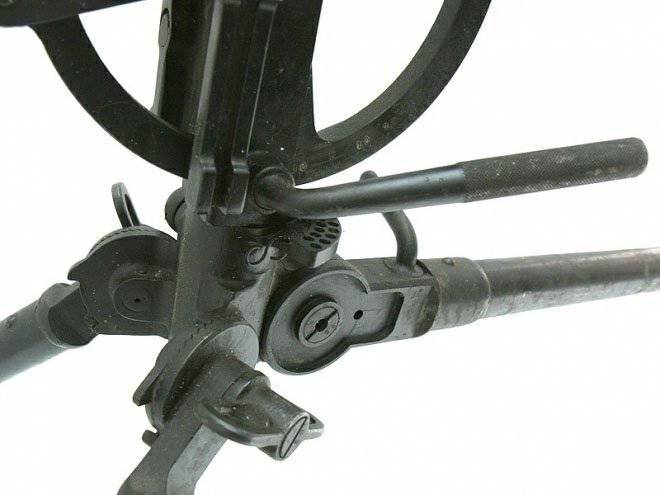
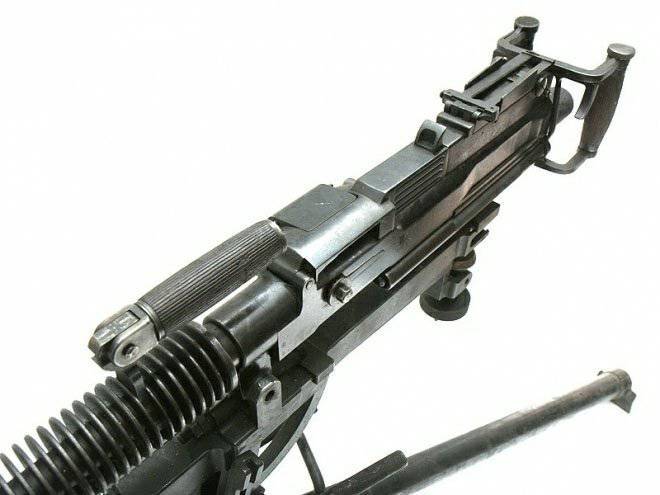
The haste of adopting a machine gun, as well as other types of weapons and military equipment, can be understood - the Soviet Union could soon enter World War II. Japan, the main adversary in the east, and Germany, the main potential adversary in the west, even despite the signed treaties, paid serious attention to equipping their armed forces with automatic weapons. In addition, after the occupation of Czechoslovakia, Germany increased the saturation of the troops with machine guns and gained a developed weapon industry.
The SVT rifle and the Degtyarev machine gun were an important part of the rearmament program of the Soviet army. The production of DS and machine tools for them in Kovrov at plant No. XXUMX was mastered already in 2, at the Tula Arms Plant mass production was mastered in June of 1939. Production of DS required great accuracy. However, already from 1940 such machine guns produced in 10677 a year amounted to 1940 or 6628%.
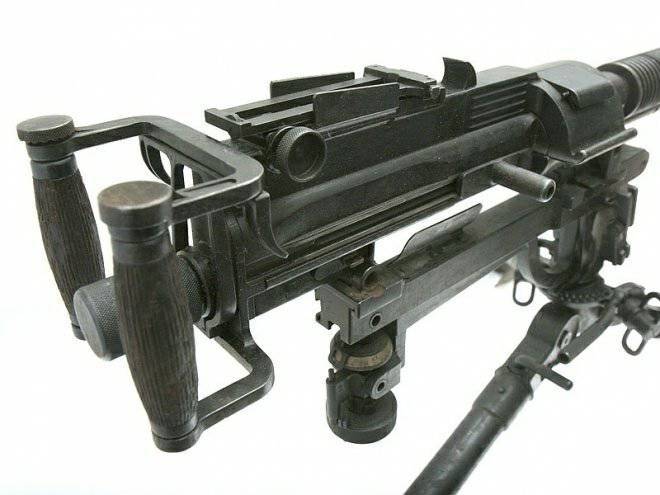
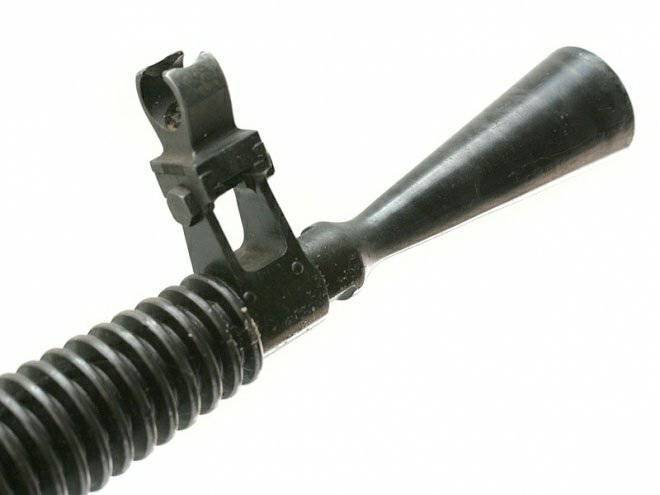
Reliability machine gun was insufficient. It was not possible to overcome the gap in the receiver of the cartridge, the fallout of a heavy bullet from the sleeve, the sleeve breaks (due to the high speed of movement with a large length of the locking assembly and the absence of a preliminary shearing of the sleeve). The proposals of the designer Simonin (the new stopper of the lid, the radiator of the barrel and the flag closure), implemented in 1941 in the pilot machine gun, did not correct the main drawbacks.
Production of the DS was stopped in June 1941 of the year, a month after Hitler's Germany attacked the USSR, the production of Maxim machine guns was resumed. For the entire 1941 year, the 9691 machine gun "Maxim" and 3717 machine guns of the DS (about 28%) were released. In total, 10345 DS-39 was released, most of which were lost in the first months of the Second World War (some of which were found among the partisans).
“The unfortunate machine-gun drama” (as it is sometimes called by analogy with the “unhappy gun drama” of 1860's) caused not so much constructive as technological lack of knowledge of the new system. But there was no time for fine-tuning (although the possibility of successful refinement was proved by developing an experimental DS-43 machine gun based on the DS-39). The complex system did not give opportunities to quickly expand production. The need for urgent formation of units from reservists, who were not familiar with the new systems, made it quite logical to return to the machine gun that had long been mastered by the troops and industry.
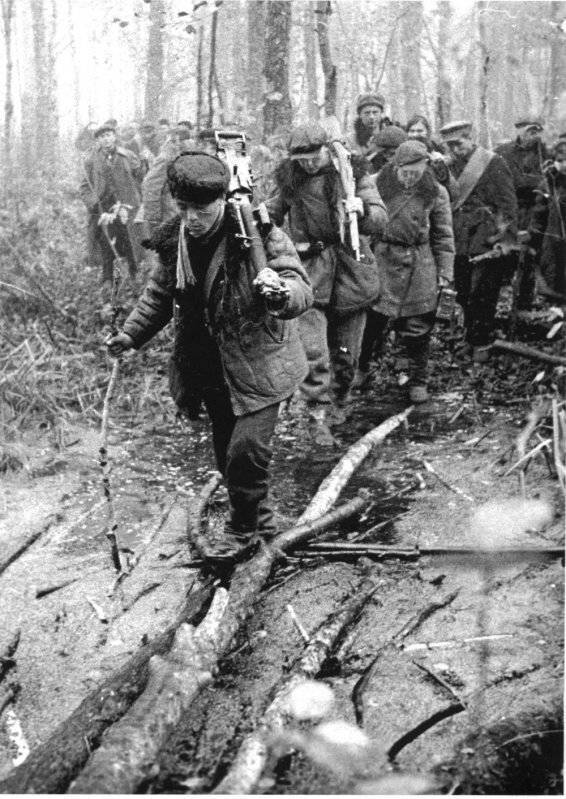
Specifications machine gun DS-39:
Cartridge - 7,62-mm sample 1908 of the year (7,62x54R);
The mass of the "body" machine gun - 14,3 kg;
Machine gun weight - 42,4 kg (on a machine with a shield);
The length of the "body" of the machine gun - 1170 mm;
The total length of the machine gun - 1440 mm (on the machine);
Barrel length - 723 mm;
Grooves - 4 right;
The length of the stroke rifling - 240 mm;
The initial speed of the light bullet - 860 m / s;
Sighting range when using a light bullet - 2400 m;
Sighting range when using heavy bullets - 3000 m;
The rate of fire - 600 / 1200 shots per minute;
Combat rate - up to 310 shots per minute;
Food - canvas tape on 250 cartridges or metal on 50 cartridges;
The weight of the cartridge case - 9,4 kg (with a ribbon on 250 cartridges);
Type of machine - infantry tripod system Degtyarev;
Shield weight - 7,7 kg;
Machine weight - 11 kg.
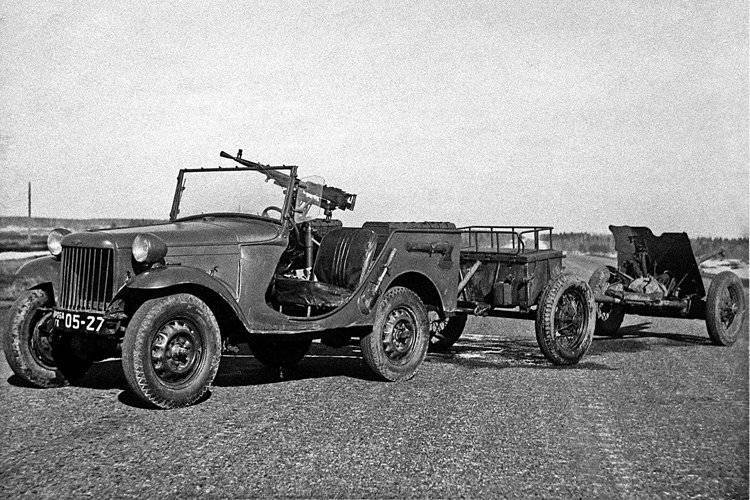
Information